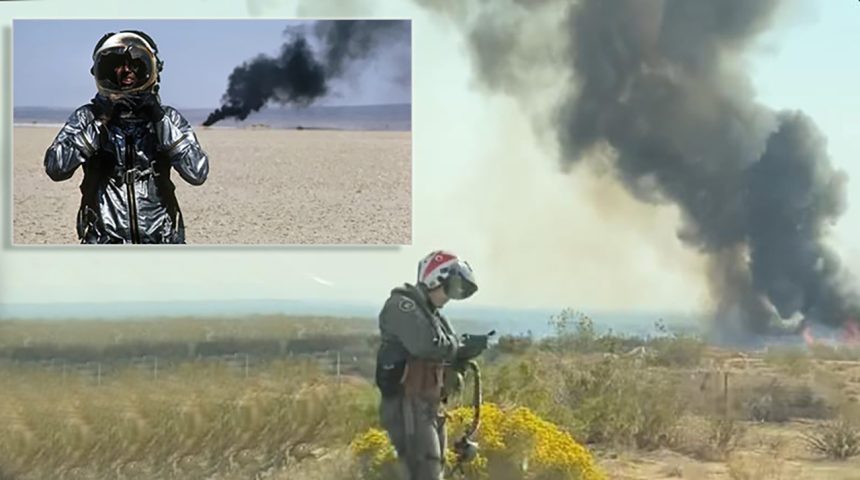A photo of the Super Hornet pilot near the crash site after ejection is strikingly similar to a famous scene from “The Right Stuff”.
On Oct. 20, 2020, a U.S. Navy F/A-18E Super Hornet departed from NAS Lemoore, California, on a training mission over the Superior Valley, crashed on the west side of Highway 14, in Kern County, not far from Naval Air Weapons Station China Lake, California. The pilot successfully ejected from the jet, using the aircraft’s Mk14 (more commonly known as SJU17A and NACES) ejection seat.
Martin-Baker (MB) “the world leader in the design and manufacture of ejection and crashworthy seats” and the manufacturer of the NACES ejection seat, shared a nice photograph on their social media channel today. The image, originally posted by KSEE24 News, shows the pilot, still wearing its JHMCS (Joint Helmet Mounted Cueing System), using what seems to be a smartphone, next to crash site, right after the ejection.
First of all, the photo gives an interesting hint: based on the emblem on the pilot’s helmet, the aircraft was likely operated by Strike Fighter Squadron 14 (VFA-14) “Tophatters”, based at NAS Lemoore and a component of Carrier Air Wing Nine (CVW-9), which is attached to the John C. Stennis Strike Group.
What is even more worth of note is the fact that the image of last week’s crash inadvertently mirrors a pretty famous scene from the movie “The Right Stuff”, that depicts a real accident occurred to aviation legend Chuck Yeager on Dec. 10, 1963, during an attempt to reach an altitude record.

On that day, Yeager, Aerospace Research Pilot School Commander, flying a rocket-propelled NF-104A Starfighter (#56-0762), one of three heavily modified Starfighters serving as a low-cost “manned spacecraft transition trainer” for test pilots destined to fly the X-15 at Edwards Air Force Base, California, entered entered a flat spin after reaching 101,595 feet. and goes. After trying all what he could to recover the plane, at 8,500 feet, Yeager ejected from the uncontrollable Starfighter.
During the separation from the ejection seat he was struck in the face by the rocket nozzle while the combination of the red hot nozzle and oxygen in his helmet produced a flame that burned the left side of his neck and set several parachute cords on fire. Yeager survived the incident although it was hospitalized for two weeks.









